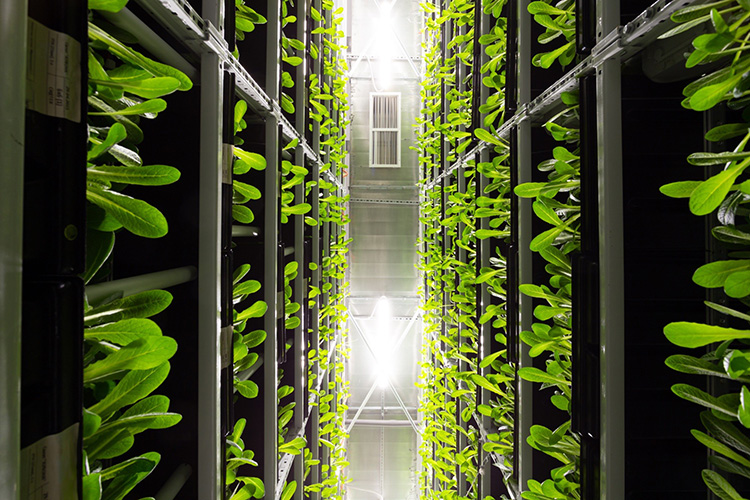Report on Conservation Farming Practices and Alignment with Sustainable Development Goals
Case Study: Bill Benjamin, Iowa Farm Environmental Leader
- Recipient of the Iowa Farm Environmental Leader Award for exemplary conservation farming practices in Donnellson, Iowa.
- Implements a comprehensive suite of environmental management systems on his family farm to enhance sustainability.
- Key practices include no-till crop rotation, extensive terracing, water control basins, and Conservation Reserve Program (CRP) initiatives.
Contributions to United Nations Sustainable Development Goals (SDGs)
-
SDG 2 (Zero Hunger) & SDG 12 (Responsible Consumption and Production): Promotes sustainable agriculture and efficient resource utilization.
- No-till farming is utilized to improve long-term soil health and productivity, securing future food production.
- Responsible production is achieved by reducing input costs through lower fuel consumption and optimized equipment use.
- Collaboration ensures the precise and necessary application of fertilizers and chemicals, minimizing waste and environmental impact.
-
SDG 6 (Clean Water and Sanitation) & SDG 15 (Life on Land): Focuses on protecting water resources and combating land degradation.
- Over 10,000 feet of terraces, integrated with pattern tile drainage and sediment control basins, significantly reduce soil erosion, thereby protecting water quality.
- CRP practices, including filter strips, contour grass strips, and grass waterways, prevent agricultural runoff and protect terrestrial ecosystems.
- These measures directly combat land degradation and contribute to the preservation of vital topsoil resources.
-
SDG 13 (Climate Action): Implements practices that contribute to climate change mitigation.
- The no-till methodology aids in carbon sequestration by increasing soil organic matter.
- Reduced machinery and fuel usage directly lowers greenhouse gas emissions associated with the farming operation.
-
SDG 17 (Partnerships for the Goals): Demonstrates leadership and collaboration for sustainable development.
- The award represents a key partnership between the Governor’s Office, the Iowa Department of Agriculture, and the Iowa Department of Natural Resources to promote sustainable practices.
- Benjamin serves as a local leader, encouraging other farmers to adopt environmentally responsible methods.
- Active participation in community and cooperative boards reflects a commitment to broader partnerships for sustainable community development.
Conclusion: A Model for Leadership in Sustainable Agriculture
- The recognition of Bill Benjamin highlights the essential role of individual farmers in achieving state and global sustainability objectives.
- His integrated farm management approach serves as a replicable model for protecting natural resources while ensuring agricultural viability.
- The efforts of Mr. Benjamin and his family are formally acknowledged as a significant contribution to the environmental stewardship of Lee County.
Analysis of Sustainable Development Goals in the Article
1. Which SDGs are addressed or connected to the issues highlighted in the article?
-
SDG 2: Zero Hunger
- The article focuses on farming practices. By implementing conservation techniques like no-till farming, the farmer is contributing to sustainable agriculture, which is crucial for ensuring long-term food security and promoting a resilient food production system.
-
SDG 6: Clean Water and Sanitation
- The article explicitly mentions the goal of “improved water quality.” Practices such as building terraces, creating filter strips, and carefully managing the application of fertilizers and chemicals are direct actions to prevent soil and chemical runoff into water sources, thus protecting water quality.
-
SDG 12: Responsible Consumption and Production
- The farmer’s adoption of no-till farming is highlighted as a method to conserve time and reduce “input cost… through less equipment and fuel cost.” This demonstrates a move towards more sustainable production patterns by using natural resources more efficiently.
-
SDG 15: Life on Land
- The core theme of the article is the protection of land and soil. The farmer’s efforts to improve “soil health,” combat “erosion of soil,” and install terraces and grass waterways are all practices aimed at protecting and restoring terrestrial ecosystems and halting land degradation.
2. What specific targets under those SDGs can be identified based on the article’s content?
-
Target 2.4: By 2030, ensure sustainable food production systems and implement resilient agricultural practices that increase productivity and production, that help maintain ecosystems… and that progressively improve land and soil quality.
- The article describes the farmer’s use of a “no-till corn/bean rotation” which “improves the soil health and helps with erosion of soil,” directly aligning with the goal of implementing resilient and sustainable agricultural practices.
-
Target 6.3: By 2030, improve water quality by reducing pollution, eliminating dumping and minimizing release of hazardous chemicals and materials…
- The farmer’s practice of applying only the “right amounts of fertilizers and chemicals so not to exceed what is necessary” is a direct measure to reduce water pollution from agricultural sources.
-
Target 12.2: By 2030, achieve the sustainable management and efficient use of natural resources.
- The article states that the no-till method “reduces the input cost of the farming operation through less equipment and fuel cost,” which points to the efficient use of resources like fossil fuels and machinery.
-
Target 15.3: By 2030, combat desertification, restore degraded land and soil… and strive to achieve a land degradation-neutral world.
- The implementation of “well over 10,000 feet of terraces,” “water control sediment basins,” “filter strips,” and “grass waterways” are all concrete actions to combat soil erosion and restore land, contributing directly to this target.
3. Are there any indicators mentioned or implied in the article that can be used to measure progress towards the identified targets?
-
Area of agricultural land under sustainable practices:
- The article implies this indicator by stating the farmer “follows a no-till corn/bean rotation on his crop acres.” The total acreage under this practice could be a measurable indicator.
-
Reduction in fertilizer and chemical use:
- The practice of ensuring “only applies the right amounts of fertilizers and chemicals” implies a measurable effort to reduce excess nutrient and chemical application, which could be tracked against standard recommendations.
-
Implementation of soil conservation infrastructure:
- The article provides a specific, measurable indicator: the installation of “well over 10,000 feet of terraces.” The number and extent of other practices like “water control sediment basins,” “filter strips,” and “grass waterways” are also quantifiable indicators of progress.
-
Reduction in fuel consumption:
- The article implies this indicator by noting that no-till farming leads to “less equipment and fuel cost.” The reduction in fuel used per acre could be calculated to measure progress towards more efficient resource use.
4. Table of SDGs, Targets, and Indicators
| SDGs | Targets | Indicators |
|---|---|---|
| SDG 2: Zero Hunger | 2.4: Ensure sustainable food production systems and implement resilient agricultural practices… that progressively improve land and soil quality. |
|
| SDG 6: Clean Water and Sanitation | 6.3: Improve water quality by reducing pollution… and minimizing release of hazardous chemicals and materials. |
|
| SDG 12: Responsible Consumption and Production | 12.2: Achieve the sustainable management and efficient use of natural resources. |
|
| SDG 15: Life on Land | 15.3: Combat desertification, restore degraded land and soil… |
|
Source: mississippivalleypublishing.com







